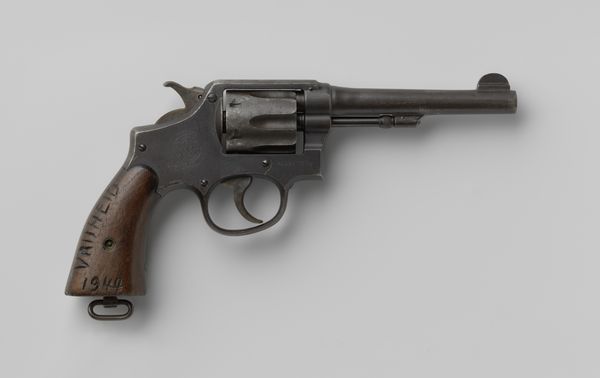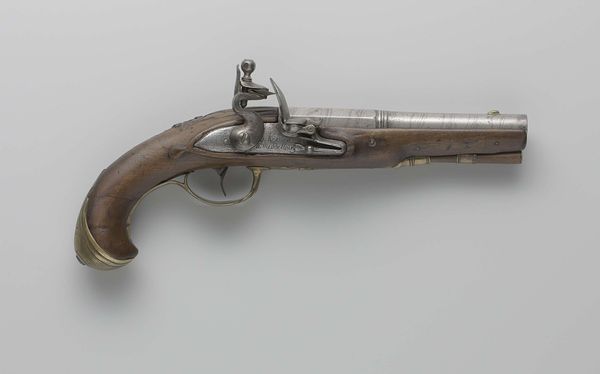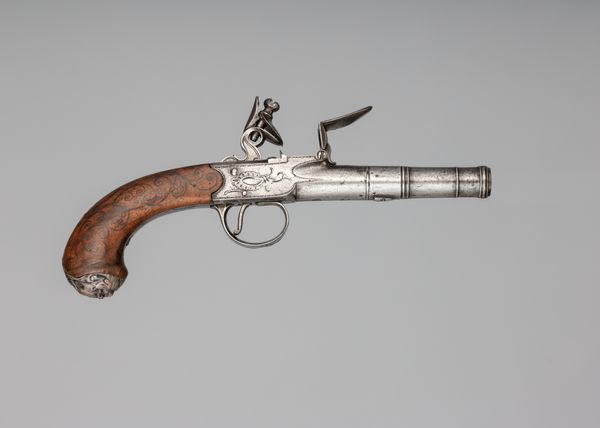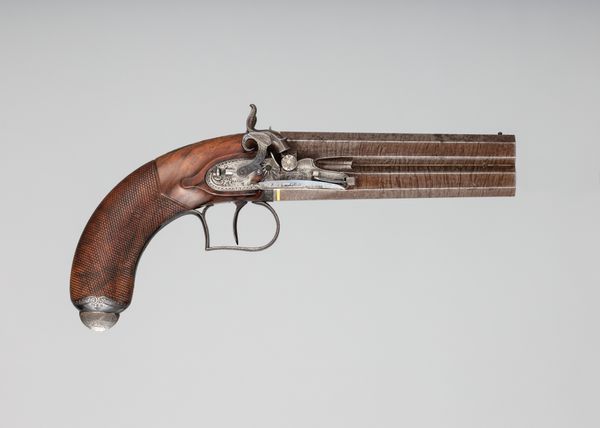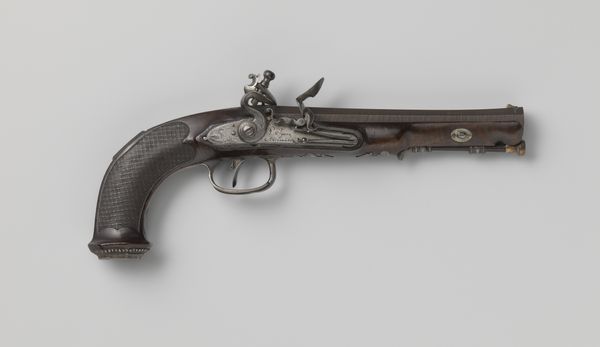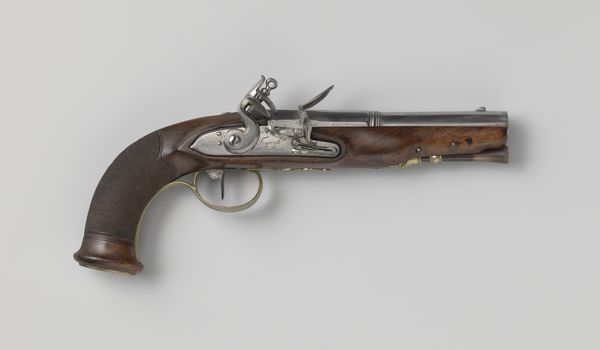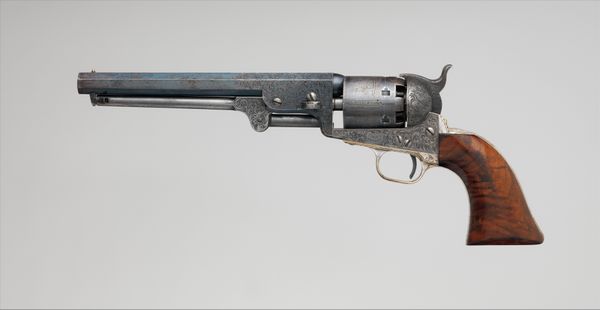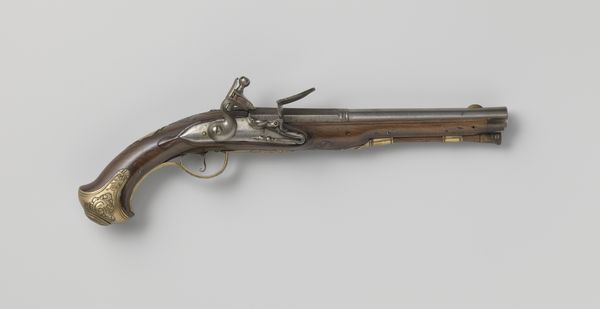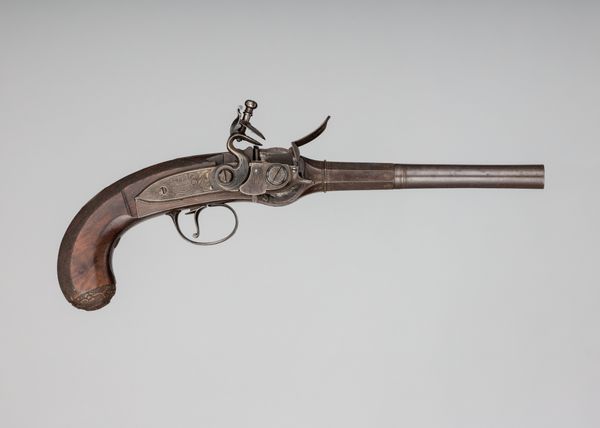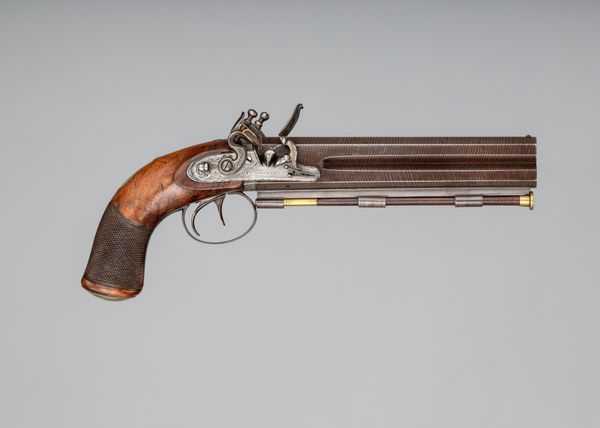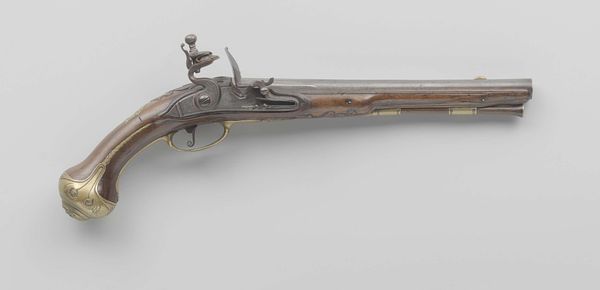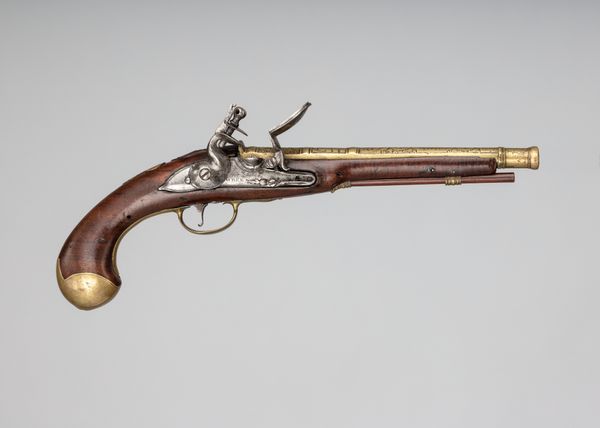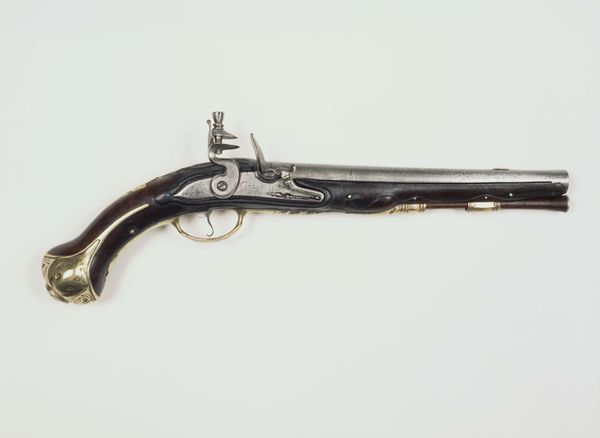
metal, photography
#
portrait
#
metal
#
photography
Dimensions: length 32.8 cm, length 16.5 cm, calibre 10.1 mm, height 5 cm, width 32.8 cm, depth 17 cm
Copyright: Rijks Museum: Open Domain
Curator: The object we're looking at is titled "Revolver uit Atjeh," a photograph of a firearm, likely taken between the 1860s and 1870s by Lemat & Girard. Editor: Stark! The composition itself is very direct and rather cold—the metallic greys against that plain backdrop convey an almost clinical precision. It has the austerity of a forensic document, yet there is something undeniably compelling about it. Curator: Indeed. This portrait is rather brutal. Note how the lines of the barrel contrast with the revolver’s ornate handle and trigger. This creates a visual tension. Editor: The “portrait” of a gun—it brings to mind critical questions around the colonial project, especially when we note the reference to Aceh in the title. Who held this weapon, and against whom was it brandished? The implied violence is inescapable, particularly considering Aceh’s resistance against Dutch colonization. The photographic image amplifies it, lending it a sinister veracity. Curator: I see your point about the loaded connotations there. And yet, let’s consider how the texture itself works, and how its form reflects its function; the hard and industrial aesthetic that is, ironically, appealing. I see this and I think of it also as a feat of engineering. Editor: But it is precisely in that engineering that the history becomes unbearable. The sleekness and industrial nature aren't simply about efficient manufacturing, but of efficient violence, systematized oppression of marginalized communities. Curator: I am inclined to agree, up to a certain point. The photograph is not glorifying violence. If anything, this visual examination offers the potential for critical reflection, and even encourages resistance to this weaponizing of power. Editor: Exactly, but recognizing its social impact does not prevent an appreciation of photography. Art's strength resides precisely in provoking complex, sometimes uncomfortable discourse, and not just aesthetic analysis. Curator: A stimulating point. I concede it leaves me pondering the intricate nexus of power, representation, and cultural significance. Editor: Yes, truly considering our history, perhaps we're prompted to challenge established truths, disrupt complacent understandings of progress.
Comments
No comments
Be the first to comment and join the conversation on the ultimate creative platform.
